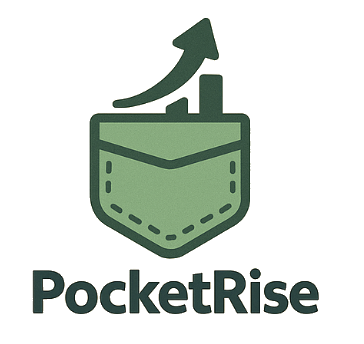When you’re just starting to get serious about your money, one of the biggest questions that comes up is: Should I start saving or investing first?
Both sound smart. Both seem important. But if you don’t have a lot to spare yet, how do you know where to focus your energy (and your dollars)?
Let’s break it down.
What’s the Difference Between Saving and Investing?
Before we talk strategy, it helps to understand how saving and investing actually work.
- Saving is setting aside money in a safe, accessible place – like a checking or savings account. It’s money you might need in the near future, or for emergencies.
- Investing is putting your money into something that can grow over time – like stocks, index funds, or real estate. It comes with more risk, but also more potential reward.
Think of saving as a safety net. Think of investing as a growth plan.
When to Prioritize Saving
If you don’t have a solid foundation yet, start with saving. Here’s why:
1. You Need an Emergency Fund
Before you invest a single dollar, you should have at least 3 to 6 months’ worth of expenses in a savings account. This helps you avoid going into debt when life throws you a curveball – like a medical bill, job loss, or surprise car repair.
2. You Need Short-Term Access
Saving is your best friend for short-term goals – think a new laptop, moving costs, or a vacation. If you’re going to need the money in less than 2-3 years, it should stay in savings, not in the stock market.
When to Start Investing
Once your emergency fund is in place and your short-term needs are covered, it’s time to invest. Why?
1. Time Is Your Superpower
The earlier you start investing, the more time your money has to grow through compounding. Even small amounts invested consistently can make a big difference over decades.
2. Your Savings Lose Value Over Time
Thanks to inflation, money sitting in a savings account slowly loses purchasing power. Investing helps your money grow faster than inflation.
3. Retirement Will Sneak Up on You
Even if it feels far off, the sooner you start saving for retirement (through something like a Roth IRA or 401(k)), the easier it’ll be to build a nest egg.
So… What Comes First?
Here’s a simple roadmap:
- Build an emergency fund (start with $1,000, aim for 3-6 months of expenses).
- Pay off high-interest debt (like credit cards).
- Save for short-term goals.
- Then start investing for the long term.
If you can do both – save and invest – that’s awesome. But if you have to choose? Start with savings. It gives you stability, flexibility, and peace of mind.
Final Thoughts
Saving and investing are both essential – they just serve different purposes. Think of saving as protecting your present, and investing as building your future.
No matter where you’re starting from, the key is to start. Small, consistent steps add up faster than you think.



